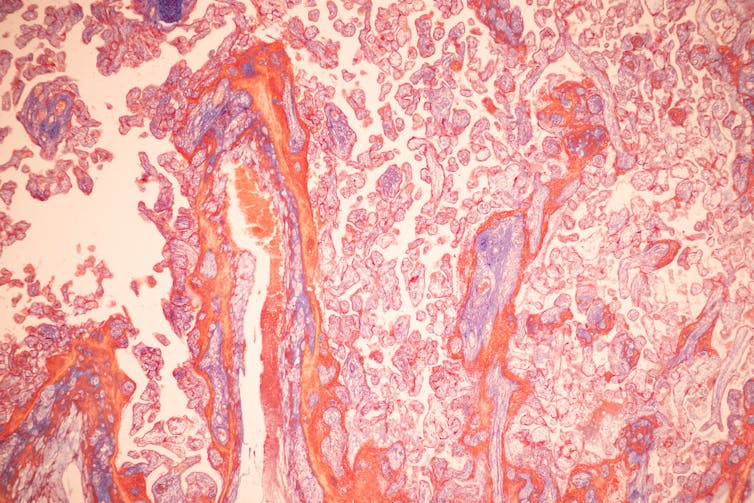Eating a placenta may not give you the health benefits some people want you to believe it has, but using it as a bandage might.
The placenta is an organ created during pregnancy that provides nutrients to a growing fetus through an umbilical cord. It’s usually large and relatively flat, composed of blood vessels, stem and immune cells, and collagen. It doesn’t look particularly appetizing to most people, and those who have eaten placentas often mention an unpleasant taste or smell.
But in the early 2000s, the practice of mothers eating their placenta after childbirth, claiming health benefits and mood improvement, gained mainstream attention. This trend typically involves putting your placenta into capsules you can take as pills, and there are even companies selling custom-made and do-it-yourself products online.
While some mammals may eat their own placentas due to limited nutritional resources in the wild, the benefits people might get from eating placentas is unclear.
If boiled and dehydrated, the useful components of the placenta may be altered and reduced. If ingested raw, pathogens may remain on the surface of the placenta. In 2016, after a newborn was hospitalized multiple times from an infection potentially resulting from the mother ingesting her placenta, the Centers for Disease Control and Prevention recommended mothers avoid taking placenta pills.
I can’t personally speak to the taste of placentas. However, as a bioengineer who designs materials to regenerate injured bones and other tissues, I along with my colleagues have uncovered a much clearer picture of the benefits placentas can offer as a biomaterial to repair wounds – if used properly.

The placenta contains many medically useful components – just not when eaten.
Sinhyu/iStock via Getty Images Plus
Placenta as biomaterial
Biomaterials are materials designed to interface with your body to repair damage. If you burned your skin, for example, your doctor may use a biomaterial such as a skin graft to help your body repair the damaged tissue, ideally providing nutrients to the damaged area to promote cell growth.
Researchers have been exploring recycling placentas, which are often thrown away after delivery, as a type of biomaterial to regrow wounded tissue in patients. Because the placenta is rich in nutrients and stem cells that give it antimicrobial, anti-inflammatory and pro-regenerative properties, this organ is a particularly good candidate for medical applications.
Your body normally responds to a wound with inflammation, which is an immune reaction that clears harmful stimuli and pathogens, often resulting in swelling and pain around the injury site.
Unfortunately, sometimes this inflammatory process can get out of hand and lead to chronic wounds and prevent healing. But the active biomolecules within the placenta work with your immune system to promote repair by reducing inflammation and preventing scar…


